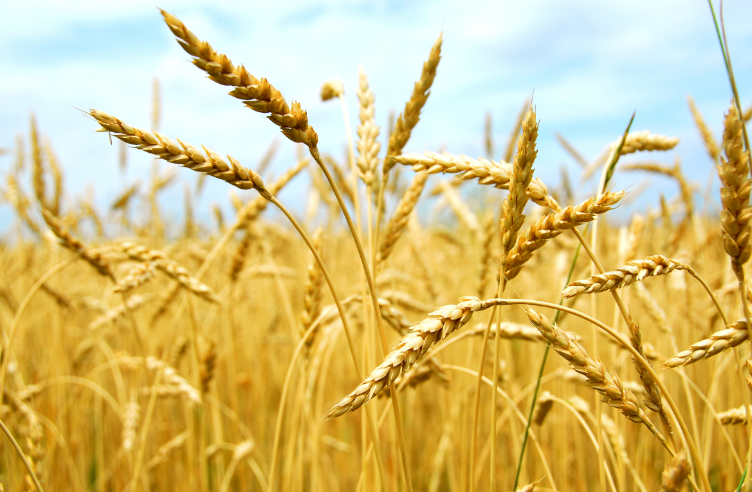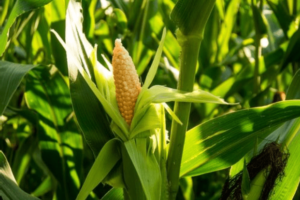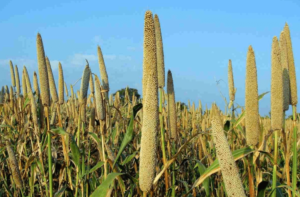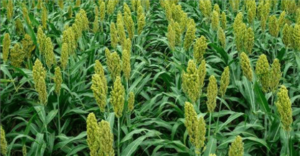WHEAT CROP

v Scientific name= Triticum aestivum L
v Origin= South-west Asia.
v Area Distribution=
· In all over world:
China, India, Russian federation, USA, France, Canada, Germany, Pakistan, Australia, Turkey.
· In India:
UP, Punjab, Haryana, MP, Rajasthan, Bihar, Gujarat, Maharashtra, Uttaranchal and West Bengal.
v Species:
a) Common wheat (T. aestivm):
· most suited for chapati and bakery and is cultivated throughout India.
b) Durm wheat (T. durum):
· best suited for noodles, vermicelli and it is cultivated in central and southern India.
c) Emmer wheat (T. dicoccum)
· Thise wheat is suitable for TN and Preferred foe granular preparation.
v Varieties:
· Karan Narendra (DBW22)
· Karab Vandana (DBW187)
· DDW47-Durum
· DBW252, DBW173 etc.
Information source: Varieties of Wheat – ICAR- IIWBR
v Economic Importance=
· Wheat is the worlds number one cereal in area.
· Cultivation of wheat is as old civilization.
· It is the first mentioned crop in Bible.
· Wheat is eaten in various forms by more than 1000 million people in the world.
· In India, it is second important staple food crop next to rice. In areas wheat is staple cereal food; it is eaten in the form of ‘chapattis.
· In areas where rice is the staple cereal food, wheat is eaten in the form of ‘puris’ or in the form of ‘upma’ (cooked from ‘suji’ or ‘rawa’).
· In addition to this, wheat is also consumed in various other preparations such as ‘Dalia’, ‘halwa’, ‘sweet meals’, etc.
· In most of the urban areas of the country, the use of backed leavened bread, flakes, cakes, biscuits, etc. is increasing at a fast rate.
· Besides staple food to human, wheat straw is a good source of feed for a large population of cattle in the country.
v Cultivation Practices:
A. Soil Requirement =
· Alluvial Soil.
· Texture: Clay and Loamy / Loamy soil
B. P.H.= 6.0-7.0
C. Climatic requirement:
· Temperature:
a) Optimum temp.= 20-25 degree.
b) Optimum germination temp.= 20-23 degree.
c) Optimum vegetative growth temp.= 20-23 degree.
d) Optimum reproductive / grain filing temp.= 23-25 degree.
· Rain fall: 50-100cm during the growing season.
· Relative humidity: 50-60%
D. Sowing time:
· Ideal sowing time is 15th October to 1st week of November.
· Sowing must be completed within the first fot night of November.
E. Spacing:
· Spacing should be maintain at the time of sowing.
· The distant between row to row 15-20 cm and plant to plant distance 5 cm.
F. Seed rate:
· For timely sowing:100-125kg/hectare.
· For late sowing: 125-150kg/hectare.
G. Seed treatment:
· Before sowing seed can be trat with Vitabax or Thiram @3 g/kg of seed before sowing.
H. Field Preparation:
They are many field preparation practices used in field preparation. They are following:
Field sanitation:
· Remove all the weeds and remove all plant debris before tillage.
· After removing plant debris and weed apply solarization application.
Tillage practices:
· Apply best optimum tillage practices. In primary tillage practices use mould board or disc plough to deep plough the soil.
· In secondary tillage practices 2 to 3 harrowing with disc or tines. At least 2-3 planking is necessary.
e) Irrigation Practices:
· Irrigation is an important step for cultivation of wheat.
· They many times irrigation provide in the field area during different plant growth stage and time. They are following:
|
Irrigation |
Days after sowing |
Stage |
|
1st irrigation |
20-25 days |
Crown root-initiation stage. |
|
2nd irrigation |
40-45 days |
Tillering stage |
|
3rd irrigation |
70-75 days |
Late jointing stage |
|
4th irrigation |
90-95 days |
Flowering stage |
|
5th irrigation |
110-115 days |
Dough stage |
· The most critical stage of the irrigation is crown root initation stage.
I. Weed management:
o In wheat crop the weed management is very important for the controlling the loses of soil nutrition loses.
o In weed management remove all unwanted plants present in the field area.
o They are many methods to controlling the weed growth. They are following.
1) Hand weeding method:
· In this type of weed management weeds can de remove with the help of hand.
· It is very effective method but it is very time-consuming method.
· It is very costly method because large number of labours can be involving this method.
2) Chemical method:
Chemical weed control of wheat can be done in the following manner:
Broad leaf weeds control:
· 2-4D@0.5-1.0Kg/ha. is applied 25-30 days after sowing.
· Terbutryn@0.75-1.0Kg/ha are apply in the filed area. It is more potent than 2,4D on broad leaf weeds.
· Fluroxypur@0.2-0.6Kg/ha are apply in the filed area. It is a good alternative to 2,4-D for broad leaf weeds in winter season. The lower dose are use at 15 days after sowing and higher rate up to 40 days after sowing.
Narrow leaf weeds control:
· Isoproturon@0.75-1.25Kg/ha are applied in filed 20-30 days after sowing.
· Methabenzthiazuron@0.75-1.25kg/ha or Metoxuron@1.2-1.6kg/ha are two herbicides can be used for pre and post emergence treatment.
J. Manure and Fertilizer:
· FYM= 12.5kg/ha are spread.
· N.P.K.= 80:40:40 kg/ha.
· Apply half of N and full dose of P2O5 AND K2O basally sowing and incorporate in the in the sowing
K. Harvesting:
· Check the moisture content of the grain, It should be around 12.5-15% for harvesting.
· Cut the wheat stalks with a scythe, sickle or machete.
· Pile the cut stalks on to a blanket or tarp.
· Thresh the wheat heads by running them through your hands or using a machine to separate the grain from the chaff.
· Collect the wheat berries in a basket or bucket.
L. Yield:
· Grain yield of wheat in north India is around 3000kg/ha. With straw yield of 5000 kg/ha.
· In Tamil Nadu, wheat yield is about 2500kg/ha.
Other important links:
wheat crop disease: WHEAT CROP DISEASE – agriculturestudymaterial
Other agronomy crops links:
Rice crop: RICE CROP | agriculturestudymaterial
Maize crop: MAIZE CROP | agriculturestudymaterial



